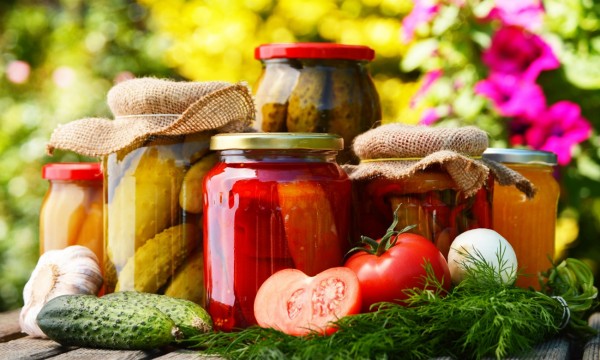Are you getting tired of the same old ways of preserving your fruit and vegetables and looking for new methods of storage for variety in flavour and presentation? These 4 types of preserving methods will give you some bright ideas.
- Browse Categories
- All Tips
-
Home & Garden
- All
- Appliances
- Bathroom
- Cleaning
- Crafts
- Decorating
- Electrical
- Flooring
- Furniture
- Garage Door
- Gardening
- Green Living
- Heating
- Home Alarm Systems
- Home Maintenance
- Home Remedies
- Home Security
- Home Staging
- House Sitting
- Junk Removal
- Kitchen
- Lawn Care
- Lock Systems
- Moving
- Outdoor Living
- Pest Control
- Plumbing
- Renovation
- Roofing
- Snow Removal
- Storage
- Tools
- Tree Service
- Health
- Family
- Travel
- Auto
- More Tips

4 easy methods of food preservation
July 29, 2015

Types of storage
There is not just one way of storing and preserving fruit and vegetables. Depending on how much spare time you have and what sort of space is available your home, you can pick from the following methods.
1. Cold storage
Putting food into cold storage is the simplest way of keeping fruit and vegetables through winter, but as it requires low temperatures (2 to 6°C, or 36 to 43°F) and high humidity (80 to 90 percent) — conditions similar to those in a refrigerator — it is likely to be effective in only the coldest regions. Live storage involves the storage of produce either under a mound of earth in the garden, in a ventilated garden shed or in an unheated cellar.
2. Freezing
Freezing relies on low temperatures to prevent the growth of disease-causing bacteria and to slow down the chemical reactions of spoilage-causing enzymes. Freezing has a minimal effect on flavour, colour, texture and nutritional values if food is properly prepared. Most nutritional loss occurs in blanching the produce before freezing (but this means a reduced cooking time, so it may not be an overall loss). Fluctuations in the storage temperatures will damage frozen food; a constant -18°C (0.4°F)or below produces best results.
3. Canning
Canning, or bottling, involves heating food to a high temperature to kill most of the disease-causing bacteria present and inactivate the enzymes, then, while it is in a sterile state, sealing the food in jars. Because of the dangers of food poisoning, home-bottling is not recommended for foods with a low acid level, such as vegetables, meat, poultry and seafood. Acid naturally inhibits the growth of dangerous bacteria; fruit, which has a high acid level, can be safely home-bottled. Store jars in a dark place to reduce light-triggered reactions, such as vitamin loss, and at a temperature below 18°C (64°F).
4. Making jam or jelly
Making jam or jelly leaves insufficient water for the growth of molds and yeasts, and the high sugar levels have a preservative effect. The taste of food is concentrated by the process of evaporation and changed by the large amounts of sugar, honey or other sweetener needed in order to form a gel. Some vitamins are lost during the heat processing required to sterilize fruit and make an airtight seal.
Easy fruit and vegetable preservation
Trying out new ways of enjoying fruit and vegetables through preservations is easy with these 4 different methods. All you have to do is select the one which suits you best, follow the steps and then stock up on tasty delights.






